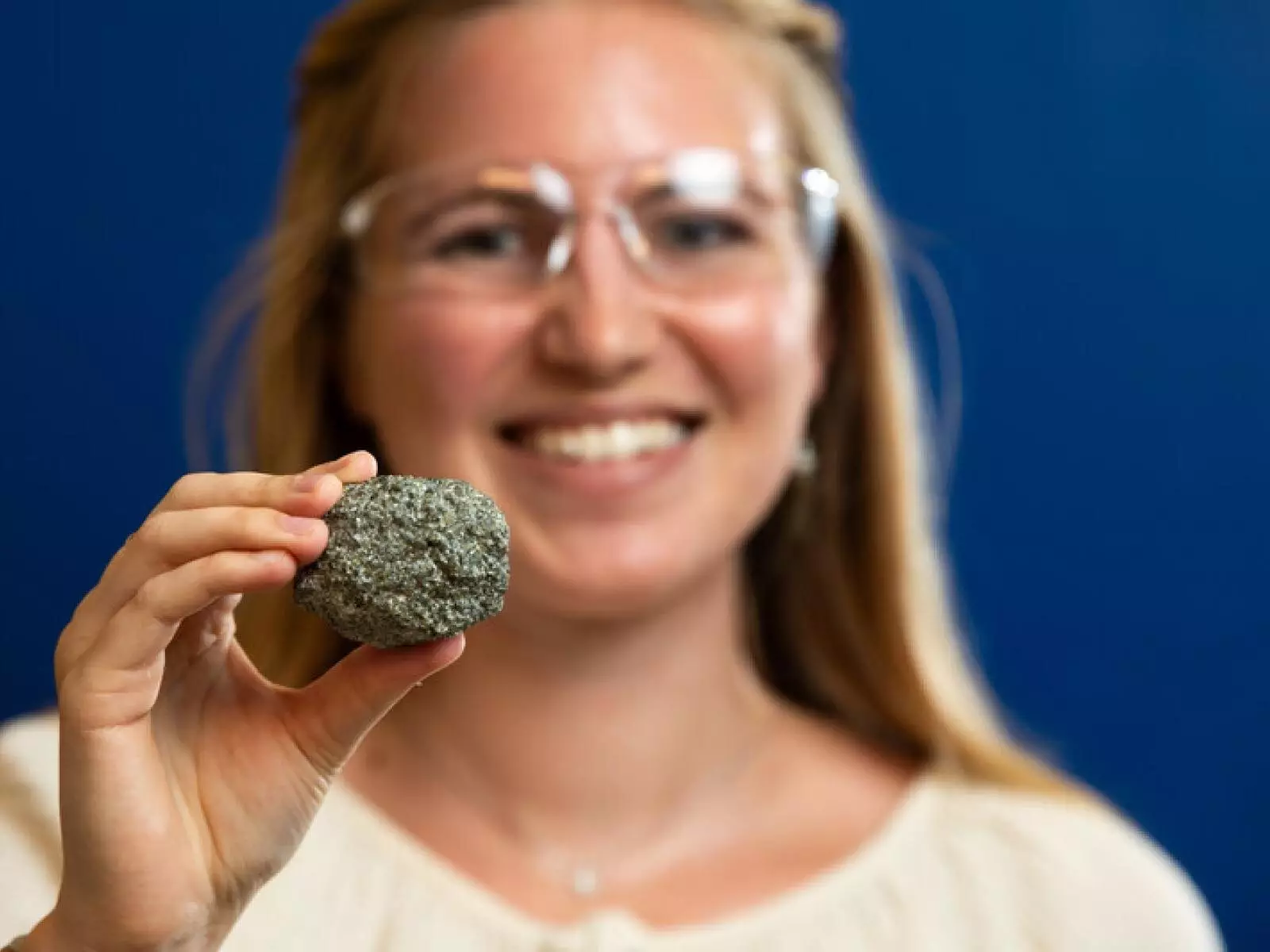As the existential specter of climate change looms above us, the quest for effective solutions often leads us to the most unexpected places—like the ground beneath our feet. While innovative technologies and policies vie for attention in the effort to curb carbon emissions, a less glamorous but incredibly promising approach is surfacing from deep within the Earth. Researchers from the Pacific Northwest National Laboratory (PNNL) are pioneering a method that transforms carbon dioxide (CO2) into stable solid minerals, accelerating a natural geological process that traditionally unfolds over thousands of years into a matter of mere months. This discovery has the potential to revolutionize how we not only think about carbon capture but how we can methodically address one of the world’s most pressing challenges.
The Mechanism of Transformation
At the heart of this ecological breakthrough lies a process known as carbon mineralization. By utilizing the natural properties of specific geological formations, particularly basalts, scientists can convert CO2 into solid mineral forms—essentially “locking away” carbon that would otherwise contribute to atmospheric emissions. PNNL Chief Chemist Todd Schaef, a leader in this field, asserts that significant strides in the understanding and implementation of this method are crucial if we are to make any real push against climate change. As it stands, the United States emits over 6,300 million metric tons of CO2 annually. Transforming even a fraction of this volume into solid mineral represents not just a scientific triumph, but a feasible pathway toward a carbon-neutral future.
Breaking New Ground in Measurement
An intriguing aspect of this research is not merely the conversion process itself, but the measurement and verification of carbon mineral content. Dr. Madeline Bartels, an ambitious intern at PNNL, has made significant contributions in this respect. Her innovative work centers around the use of advanced thermogravimetric analysis coupled with mass spectrometry, known as TGA-MS, which allows researchers to quantify carbon minerals at unprecedentedly small scales—down to less than 100 parts per million. To put this in perspective, envision trying to find a single playing card on an expansive football field; Bartels and her team have developed the ability to see and measure that card up close.
This technique offers a revolutionary leap in our capacity to accurately track how much carbon is secured within rocks, moving beyond previous methodologies that could only provide a vague or incomplete picture. In essence, TGA-MS represents an advanced pair of eyes in the realm of geochemistry, enabling scientists to meticulously document how effectively carbon can be mineralized underground.
Challenges and the Road Ahead
Despite the promising nature of this technology, there remains a critical gap between scientific advancement and real-world application. Currently, there are no commercial-scale projects in the United States employing this method, primarily due to the complexities of regulatory approval for underground CO2 injections. The process requires special permits that hinge on the outcomes of ongoing studies and assessments of industrial requirements. This regulatory labyrinth highlights an essential truth: innovation and implementation must navigate a myriad of bureaucratic and technical hurdles before reaching common ground.
As emphasized by Quin Miller, a co-author of Bartels’s paper, successful implementation of this technique hinges on collaboration among numerous stakeholders, including the Department of Energy, industry representatives, and local communities. Only through a united front can we develop best practices for the sustainable, secure storage of CO2 via mineralization, facilitating a synergistic approach to tackling climate-related challenges.
The Promise of the New Generation
Amid the formidable challenges, one glimmer of hope rests in the hands of future scientists and researchers. Bartels’s journey from undergraduate intern to published author exemplifies how immersive research experiences can foster a new generation of innovators eager to tackle climate-related issues. The involvement of early-career researchers not only breathes fresh ideas into the scientific community but also ensures that diverse perspectives permeate the quest for effective carbon management solutions.
Bartels’s work stands as a testament to the invaluable role of hands-on experience in emerging fields. Her continued engagement with PNNL as a graduate student signifies an earnest commitment to furthering the understanding of carbon mineralization and geochemistry, reaffirming that education and research are inextricably linked in the mission to safeguard our planet.
As we stand at a critical juncture in the fight against climate change, the innovative work being done at the Pacific Northwest National Laboratory offers a beacon of hope. The transformational capacity of carbon mineralization is not merely a scientific curiosity; it is a realistic pathway toward an effective response to rising atmospheric CO2 levels. By harnessing natural processes and refining innovative techniques for measurement, the potential to convert CO2 into solid rock may help secure a cleaner, more sustainable world for generations to come. The intricate dance between science, policy, and community involvement serves as a poignant reminder that addressing climate challenges requires an unwavering commitment to collaboration and innovation.

